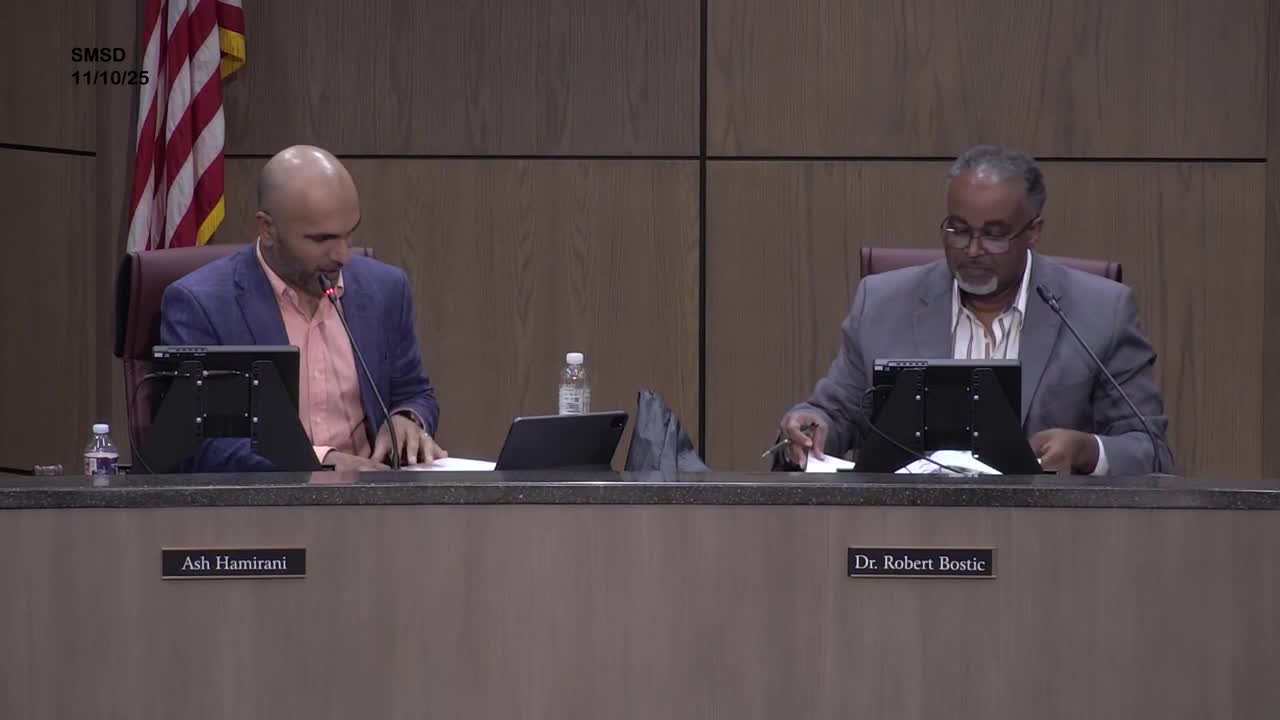Stafford board approves expansion of STEM Magnet Academy to add first grade
November 10, 2025 | STAFFORD MSD, School Districts, Texas
This article was created by AI summarizing key points discussed. AI makes mistakes, so for full details and context, please refer to the video of the full meeting. Please report any errors so we can fix them. Report an error »

STAFFORD, Texas — The Stafford Municipal School Board on Nov. 10 approved an expansion of the Stafford STEM Magnet Academy to add a first-grade cohort for the 2026–27 school year, voting 7–0 after trustees and staff debated enrollment projections, testing and startup costs.
Superintendent’s staff presented the expansion as a continuation of an existing kindergarten STEM program, arguing that early hands-on STEM instruction strengthens ‘‘executive functioning and memory’’ and builds a pipeline into the district’s elementary and secondary STEM offerings. ‘‘STEM and then what we're doing right now, it cultivates … critical thinking, creativity [and] innovation,’’ said Dr. Perry Allen, who led the classroom-level presentation and recruitment remarks. He said the program currently enrolls about 41 students in the ECC/ESA cohort, including 14 new admits and roughly 50 applicants already interested in the magnet academy.
Administrators asked the board to authorize the expansion while noting a separate budget amendment would be required before district funds are spent. Staff said $118,000 is needed in the current fiscal year to cover initial teacher pay pro‑rations, classroom fixtures and technology; $379,000 would be needed for 2026–27, producing a combined estimate of roughly $497,000 in start‑up and first‑year costs. CFO staff said those estimates are subject to variation in salaries and procurement but argued the program would be net‑positive at the district’s recruitment targets.
Trustees pressed staff for measurable outcomes and long‑term sustainability. Several trustees requested that the district track internal benchmark testing—administration said they plan to use IC and MAP testing at grade 2 and 3 as internal benchmarks to measure the program’s academic impact—and also requested follow‑up data on retention and high‑school enrollment patterns. A trustee raised concerns about low enrollment at the STEM high‑school level, noting the district has classes in recent years with very small rosters; trustees asked staff to present additional data on shared staffing, attrition and cost per pupil for upper grades.
Board members also discussed funding mechanics. Staff and the CFO outlined options for funding the 118,000 ask this year (maintenance note financing vs. general fund balance) and agreed to return with a reconciled line‑item breakdown to explain a roughly $60,000 variance between two presented totals. Administration also said the George Foundation has expressed interest in supporting start‑up costs with grant funding.
Trustee Hana Hosa moved to approve the first‑grade expansion, with Vice President Jean Baptiste seconding an amendment clarifying that the vote approved the expansion itself and that any district expenditures would follow in a later budget amendment. The amended motion carried 7–0. The board directed staff to provide the requested budget reconciliation and to bring required amendments and updates to the board for approval.
What’s next: staff will return with a budget amendment to authorize the $118,000 expenditure for this fiscal year, a reconciliation of the presented cost estimates, and follow‑up reports on recruitment and early assessment results.
Superintendent’s staff presented the expansion as a continuation of an existing kindergarten STEM program, arguing that early hands-on STEM instruction strengthens ‘‘executive functioning and memory’’ and builds a pipeline into the district’s elementary and secondary STEM offerings. ‘‘STEM and then what we're doing right now, it cultivates … critical thinking, creativity [and] innovation,’’ said Dr. Perry Allen, who led the classroom-level presentation and recruitment remarks. He said the program currently enrolls about 41 students in the ECC/ESA cohort, including 14 new admits and roughly 50 applicants already interested in the magnet academy.
Administrators asked the board to authorize the expansion while noting a separate budget amendment would be required before district funds are spent. Staff said $118,000 is needed in the current fiscal year to cover initial teacher pay pro‑rations, classroom fixtures and technology; $379,000 would be needed for 2026–27, producing a combined estimate of roughly $497,000 in start‑up and first‑year costs. CFO staff said those estimates are subject to variation in salaries and procurement but argued the program would be net‑positive at the district’s recruitment targets.
Trustees pressed staff for measurable outcomes and long‑term sustainability. Several trustees requested that the district track internal benchmark testing—administration said they plan to use IC and MAP testing at grade 2 and 3 as internal benchmarks to measure the program’s academic impact—and also requested follow‑up data on retention and high‑school enrollment patterns. A trustee raised concerns about low enrollment at the STEM high‑school level, noting the district has classes in recent years with very small rosters; trustees asked staff to present additional data on shared staffing, attrition and cost per pupil for upper grades.
Board members also discussed funding mechanics. Staff and the CFO outlined options for funding the 118,000 ask this year (maintenance note financing vs. general fund balance) and agreed to return with a reconciled line‑item breakdown to explain a roughly $60,000 variance between two presented totals. Administration also said the George Foundation has expressed interest in supporting start‑up costs with grant funding.
Trustee Hana Hosa moved to approve the first‑grade expansion, with Vice President Jean Baptiste seconding an amendment clarifying that the vote approved the expansion itself and that any district expenditures would follow in a later budget amendment. The amended motion carried 7–0. The board directed staff to provide the requested budget reconciliation and to bring required amendments and updates to the board for approval.
What’s next: staff will return with a budget amendment to authorize the $118,000 expenditure for this fiscal year, a reconciliation of the presented cost estimates, and follow‑up reports on recruitment and early assessment results.
View full meeting
This article is based on a recent meeting—watch the full video and explore the complete transcript for deeper insights into the discussion.
View full meeting
